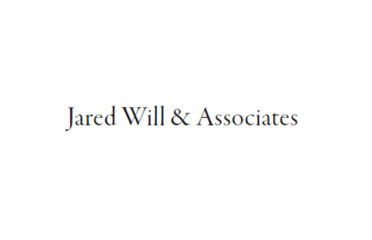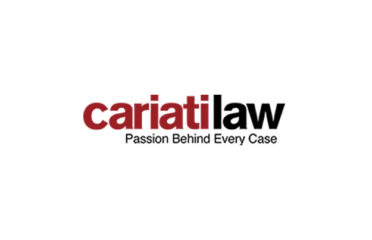What is Refugee Law in Canada?
Canada has long been recognized as a global leader in refugee protection, with over 100,000 refugee claims processed annually. The country’s refugee law balances humanitarian obligations with national security concerns through a carefully structured legal framework. This guide examines Canada’s refugee determination process, key legal concepts, recent policy changes, and the rights and responsibilities of asylum seekers under Canadian law.
1. Legal Foundations of Refugee Protection
A. International Obligations
Canada’s system is built on:
-
1951 UN Refugee Convention (and 1967 Protocol)
-
Convention Against Torture
-
International Covenant on Civil and Political Rights
B. Domestic Legislation
-
Immigration and Refugee Protection Act (IRPA) (2002)
-
Refugee Protection Division Rules
-
Charter of Rights and Freedoms (Section 7 right to life/security)
Canada’s Acceptance Rate: 60-65% of claims approved at first instance (2023 data)
2. Who Qualifies as a Refugee in Canada?
A. Legal Definition (IRPA s.96)
A Convention refugee is someone with:
-
Well-founded fear of persecution
-
Based on race, religion, nationality, political opinion, or membership in particular social group
-
Unable/unwilling to seek state protection
B. Complementary Protection (IRPA s.97)
Protection may also be granted to those facing:
-
Risk of torture
-
Threat to life/risk of cruel treatment
-
Danger of extreme sanctions (e.g., death penalty)
Example: LGBTQ+ individuals fleeing state-sponsored persecution
3. The Refugee Claim Process
A. Making a Claim
-
Entry Options:
-
At ports of entry (air/land borders)
-
Inside Canada (IRCC offices)
-
Exception: Ineligible if arriving via “safe third country” (US border)
-
-
Initial Screening:
-
Security/medical checks
-
Basis of Claim (BOC) form submission (15-day deadline)
-
B. Refugee Protection Division (RPD) Hearing
-
Timeline: Hearing within 60 days (expedited) or 2+ years (regular)
-
Process:
-
Testimony under oath
-
Country condition evidence
-
Ministerial interventions (if applicable)
-
-
Success Rates: Vary by country (e.g., 85% for Eritrea vs 15% for Mexico)
C. Appeals & Recourse
-
Refugee Appeal Division (RAD) (within 15 days)
-
Federal Court Judicial Review (leave required)
-
Pre-Removal Risk Assessment (PRRA) (if new risks emerge)
2023 Stats: 18% of RAD appeals successful
4. Safe Third Country Agreement (STCA)
Key Provisions
-
Requires refugee claimants to seek protection in first “safe” country (US/Canada)
-
Applies only at official land border crossings
-
Exceptions: Family unification, unaccompanied minors
2023 Impact: 99% of STCA claimants turned back at land borders
5. Rights of Refugee Claimants
A. While Claim Pending
-
Right to work (after 180 days if no decision)
-
Access to healthcare (IFHP)
-
Provincial social assistance (varies)
-
Public education for children
B. After Acceptance
-
Pathway to permanent residence
-
Family reunification options
-
Eligibility for citizenship (after 3 years as PR)
6. Recent Policy Changes (2023-2024)
A. Expanded STCA Application
-
Now includes entire land border (closing “Roxham Road loophole”)
B. Faster Processing
-
30-day target for certain manifestly unfounded claims
C. Safe Country List
-
Added 15 countries (including Mexico, Brazil)
D. Increased Resettlement Targets
-
76,000 refugees to be resettled by 2025
7. Key Legal Challenges
A. STCA Constitutionality
-
Canadian Council for Refugees v. Canada (2023 SCC appeal pending)
B. Credibility Assessments
-
Courts increasingly scrutinizing RPD negative findings
C. Procedural Fairness
-
Right to counsel not absolute but must be meaningful
Landmark Case: Singh v. Canada (1985) established fundamental justice rights
8. Canada’s Refugee Resettlement Programs
A. Government-Assisted Refugees (GARs)
-
UNHCR-referred
-
Full government support for 1 year
B. Privately Sponsored Refugees (PSRs)
-
Groups commit to 1-year support
-
22,500 spots annually
C. Blended Visa Office-Referred (BVOR)
-
Shared government/private support
2024 Targets: 27,000 GARs, 27,500 PSRs, 1,500 BVORs
9. Emerging Issues
A. Climate Refugees
-
No formal recognition but some accepted under complementary protection
B. Afghan Special Measures
-
40,000 resettlement commitment (delays reported)
C. Ukraine CUAET Program
-
Temporary protected status for 210,000+ Ukrainians
D. AI-Assisted Processing
-
Pilot projects for claim triaging
10. How Canada Compares Globally
-
#1 in UNHCR resettlement (30% global total)
-
#3 asylum claims among Western nations (after US, Germany)
-
5x more generous per capita than EU average
11. Challenges in the System
A. Backlogs
-
138,000 pending claims (Q1 2024)
-
24-month wait for some hearings
B. Housing Shortages
-
GARs facing homelessness in major cities
C. Legal Aid Cuts
-
40% decrease in immigration clinic funding since 2019
12. Case Study: Febles v. Canada (2014)
This Supreme Court ruling:
-
Clarified “serious non-political crime” exclusion
-
Established proportionality test
-
Influenced subsequent exclusion cases
13. The Future of Refugee Law in Canada
Emerging trends include:
-
Expanded private sponsorship
-
Climate displacement policies
-
Digital identity verification
-
Regional processing centers
Conclusion
Canada’s refugee protection system remains one of the world’s most generous, though increasing backlogs and policy changes present ongoing challenges. For claimants, understanding the legal process is essential to navigating its complexities successfully. For Canadians, the system represents both a humanitarian commitment and a carefully managed immigration program that has shaped the nation’s identity.
As Justice Rosalie Abella noted in R v. Appulonappa: “Refugee law is meant to give sanctuary to those whose governments cannot or will not protect them.” Canada continues refining this delicate balance between compassion and security in an era of unprecedented global displacement.













